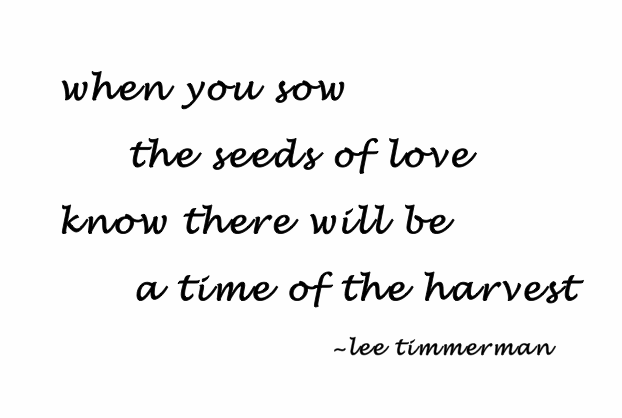who can walk
down to the sea
and not long
to be a sailor
Focusing and Directing the Mind
The mind, with the energy of our emotions, is the most powerful tool we have to attain wellness and happiness.
When the mind is calm, we naturally feel love, appreciation, gratitude, thankfulness, and joy. If we watch children, we will see that there is a cheerfulness about them and an enjoyment of the world around them. This is the natural state of the calm mind until we agitate the mind with conflict from opposing desires. We need to understand we can have an active mind that is both calm and focused without being agitated.
A calm mind lends itself towards clarity, energy, learning, cooperation and balance in our life. A calm mind is an open mind, without preconceived ideas, beliefs or opinions, thereby allowing learning and growing to happen easily.
In learning to take control of our mind, we need to understand that thoughts are just thoughts. They are not “truth” or “reality.” At best they are a perception of reality. If a perception of reality changes, then the thoughts will change. We must also recognize feelings are the accumulation of thoughts. Happy feelings like love, joy, gratitude, and peace are from and are our higher nature. Unhappy feelings like anger, jealousy, frustration, and insecurity usually arise from broken expectations and are not part of our nature. We need to learn to non-attach from these thoughts and transform them to the positive.
We must expand the use of non-attachment. An example of non-attachment is driving consciousness. This can be seen in driving a car. We are aware, alert, and following the rules of the road while driving respectfully and defensively. When we arrive at our destination, we non-attach and let go of the driving consciousness. It has fulfilled its purpose. Once we leave the car, we go on with what we planned on doing at our destination. We don’t continue to think about driving the car. Our consciousness has now shifted to work, shopping, or whatever our plans are. Driving consciousness has a time and place in our life, but when we aren’t using it, we non-attach from it.
We all know how to non-attach because we non-attach in so many areas of our life without giving it much thought. We have a different consciousness for work, play, interacting, grooming, eating, and so on. These are situations that have patterns or rules and boundaries of some kind. When we leave those activities or events, we leave behind those patterns or rules and move into the next situation. We simply need to understand the naturalness and usefulness of this process and become aware of how we can willfully use it. Once we can clearly see how healthy and natural non-attachment is, we can expand it into other areas of our life. We then utilize non-attachment to insure we don’t enmesh the different aspects of our life.
We also need to understand that our thoughts are what cause our feelings, and our feelings are the cause of our moods and attitudes. With this understanding, mental and emotional distractions can be removed, and we will have the ability to utilize and direct Will Power by focusing our time and energy. Simply stated, to change our mood to a happy state, all we have to do is change our thoughts, and our feelings will follow. Happiness is not only preferable, but it is also a powerful energy to help us accomplish our goals.
We must also begin to develop discernment between essential thoughts and feelings, and non-essential thoughts and feelings. Essential thoughts and feelings are those that we consider essential to the fulfillment of our goals or happiness. Non-essential thoughts and feelings are all those thoughts and feelings that are not essential or relevant to the fulfillment of our goals or happiness. We will notice that almost all of the thoughts and feelings that are associated with shallow and rapid or uneven breathing are not positive or uplifting, nor are they usually essential to our happiness.
Everyone does and says as much as he has understood.
Tulsides (Indian Poet)
Affirming the positive in our life is something we must learn to do, in order to enjoy our life. This is easy to do if we recognize that each situation, personal interaction, or thought and idea, has both a positive and negative pole. The positive pole being defined as more open and inclusive, and the negative pole being defined as the more limited. We get to choose that which we wish to see and perceive with each situation. How much potential or how many limitations we see will depend on what we are looking for. What you see is what you get.
Psychologists have said that to change our self is a very difficult process. They even quote the statistic that 90% of cardiac patients make no lifestyle changes after their cardiac incident.
The goal of taking control of the mind is not to empty it of all thoughts. Even though a quiet mind is healthy and happy, there is more to life than just sitting quietly. The goal is to calm the mind so we can transform the negative and unhealthy thoughts into new, creative, and uplifting thoughts and ideas. This allows us to see life with a larger and healthier view.
The mind, with the energy of our thoughts and feelings, is the most powerful tool we have to attain wellness and happiness in life. We utilize this tool to provide better nutrition for the body, mind, and spirit. We make those minor adjustments that will lead to a healthier and more fulfilling life. We come up with a plan for how to achieve our goals in life. Then we implement the ego, the “I will do this,” to will our self to develop discipline, thereby attaining our goals. We must understand that once we have gained control of our mind, we can direct our self towards a healthier and happier life, filled with joy.
We must accept personal responsibility for our wellness. Life, people, and obstacles are not standing in our way of being happy and successful. It is our lack of knowledge and discipline that stands in our way. With some minor adjustments, our mind becomes the tool, and our emotions become the power to help us attain our happiness and other life goals.
Time is the most valuable thing
one can spend.
Theophrastus d. 278 BC
ENERGIZING AND RELAXATION TECHNIQUE
This exercise will both energize and relax the muscles of the body. The combination of more energy and less tension will immediately reduce stress.
Begin by standing upright with the feet 12 inches apart and the arms hanging at your side. Take a deep diaphragmatic breath and exhale fully. As you begin to take another deep diaphragmatic breath, begin the gentle isometric tensing of the body from the feet up to the head. The tensing of the entire body will take place during this one deep diaphragmatic breath. When you reach the neck and face, you will hold the tension for five seconds, and then exhale as you relax each body part from the head to the feet.
Always use gentle tensing of the muscles, working towards moderate tensing. Never tense muscle fully or intensely, as this will cause stress, or even injury, to the body.
EXERCISE
1. Deep diaphragmatic inhalation then exhale fully
2. Begin deep diaphragmatic inhalation as you gently tense each area (from 1 to 10).
At Neck and face, hold for 5 seconds, then begin exhalation.
3. Begin a full exhalation as you relax each area (10 to 1)
| Inhalation (tense 1-10 below) | Exhalation (relax 10-1 below) |
|---|---|
| 1. Feet | 10. Neck and Face |
| 2. Calves | 9. Upper Back |
| 3. Thighs | 8. Arms |
| 4. Buttocks and Hips | 7. Chest |
| 5. Abdomen | 6. Lower Back |
| 6. Lower Back | 5. Abdomen |
| 7. Chest | 4. Buttocks and Hips |
| 8. Arms | 3. Thighs |
| 9. Upper back | 2. Calves |
| 10. Neck and Face | 1. Feet |
4. After completing the tensing and relaxing, take a full deep inhalation and exhale completely. Step four is the same as step one. Do six to twelve repetitions of this exercise.
The tensing of body parts 1-10 are done on a single inhalation, held for five seconds and then the body parts are relaxed in reverse order of 10-1 on a single exhalation. As you get use to the exercise, you may build up to holding the tension for ten seconds instead of five seconds. This would give an even count to the exercise: Inhalation to the count of 10, retention for a count of 10, and exhalation for a count of 10. Always do at least one regular deep inhalation and exhalation between sets of tensing and relaxing. If you are doing steps 1-4, you will have two regular deep breaths between each set.
We need to raise the level of our aspirations. When we get up in the morning, we must simply say that we want to see beauty, we want more laughter, we want to feel a little more love and joy.


